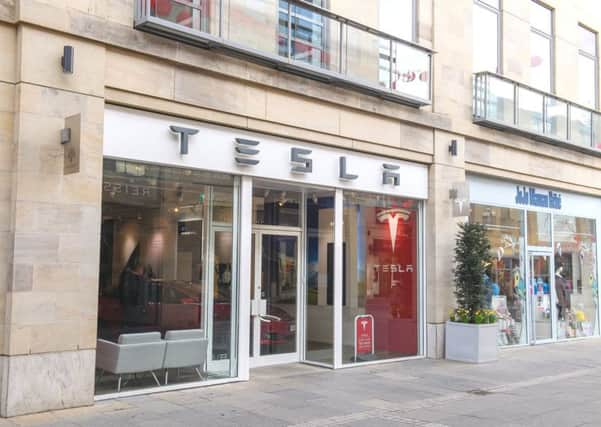Commercial property: What will drive car showrooms in the future?


Figures from the Society of Motor Manufacturers and Traders showed sales in alternative fuelled vehicles (AFVs) – which include hybrid, electric and hydrogen cars – grew by nearly 35 per cent across the UK last year, although total car sales declined by over 5 per cent.
Nearly 120,000 AFVs were purchased by British motorists in 2017, or 4.7 per cent of the market share.
Advertisement
Hide AdAdvertisement
Hide AdWith the UK Government planning to ban sales of new diesel and petrol vehicles by 2040 while actively encouraging consumers to opt for AFVs through greater investment in intelligent transport infrastructure, car retailing will continue to change.
This could significantly affect the huge out-of-town dealerships which are common across Scotland as the retailing model for AFVs is proving radically different.
The dealerships we see on the outskirts of cities and towns, such as Perth’s motor mile or the showroom clusters at Seafield and Newbridge near Edinburgh, tend to occupy multiple acres of land, accommodating high numbers of vehicles as well as large service centres and workshop areas.
The new breed of AFV dealers are, however, following a different sales model which typically requires smaller premises in established shopping areas.
One of the world-leading electric car brands, Tesla, provides a prime example of this approach.
Initially opening its first UK premises in London’s high-end Westfield Shopping Centre, the company opted for a unit in the trendy fashion retail centre Multrees Walk when it opened in Edinburgh in 2015.
With just a single car on display, the minimalist retail site includes digital screens where customers can look at specification details and optional extras on their preferred model which can then be directly ordered online from California.
While the “shop” does have a back-of-house operation, it’s small in scale due to the fact that electric vehicles have far fewer moving parts than a traditional car and therefore tend to have far fewer servicing requirements.
Advertisement
Hide AdAdvertisement
Hide AdDevelopments in big data, enabling motor retailers to target their consumers more accurately, are also changing and reducing staffing requirements.
In some areas of the AFV sector, audio visual and IT skills, which allow a salesperson to guide a customer through a 3D tour of a virtual car, are paramount.
The growth of omni-channel retailing and manufacturers using innovative means to reach consumers are both likely to alter the sector’s commercial property needs.
Along with increasing use of city centre retail locations, we could see car retailers increasing the use of temporary pop-up shops.
Car dealerships may also consider entering partnerships with high traffic consumer areas such as supermarkets, where they could sublet non-food retail space to display and sell onsite.
While there is likely to be a longer term future for some of the larger out-of-town dealerships, especially in servicing and used car sales, many will need to innovate.
Car dealerships may, for example, consider adding a high quality restaurant or shopping experience into the mix.
They may also need to look at partnerships with other products and experience providers with shared brand values to appeal to their target market.
Advertisement
Hide AdAdvertisement
Hide AdThe growth of AFV sales and the changing nature of vehicle retailing means that large out-of-town car showrooms will have to diversify to remain relevant in future.
Angus MacRae is partner at law firm
CMS